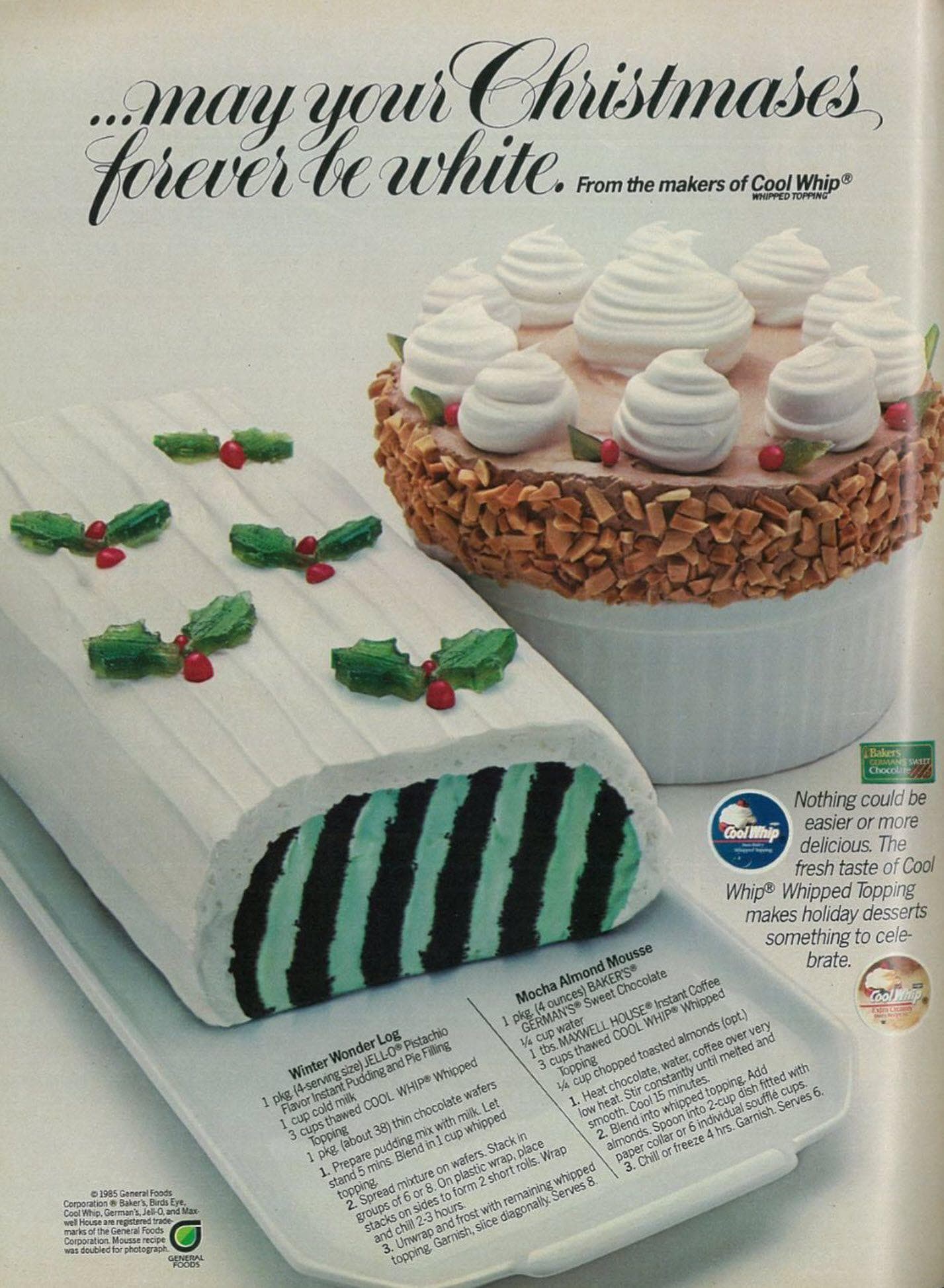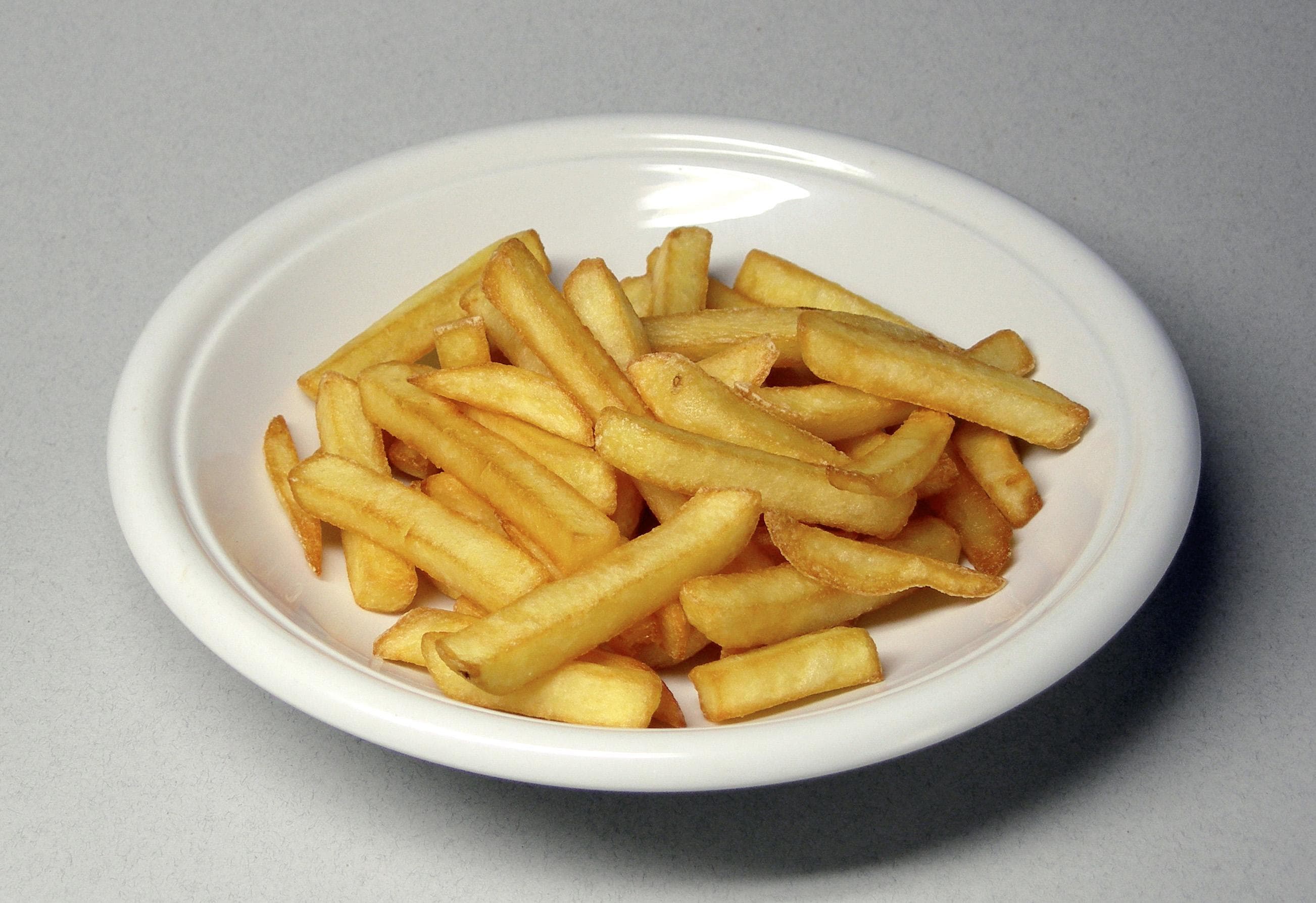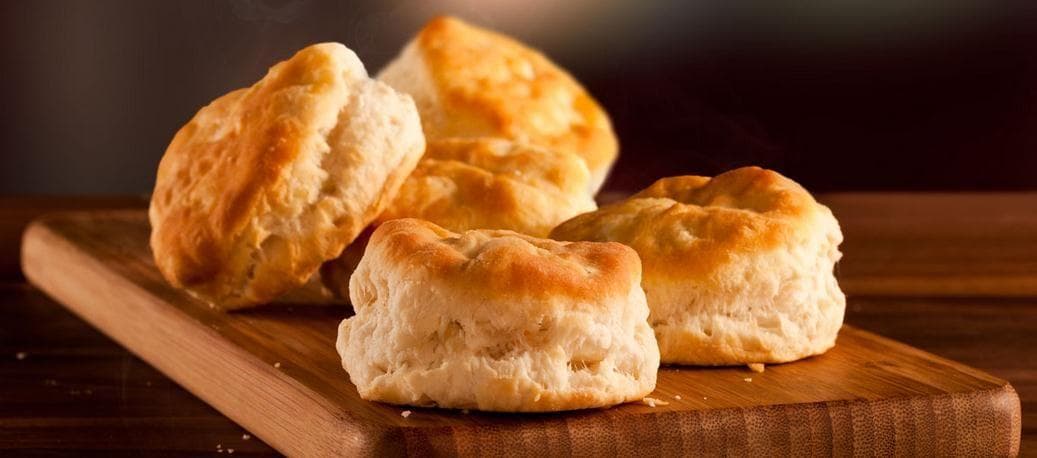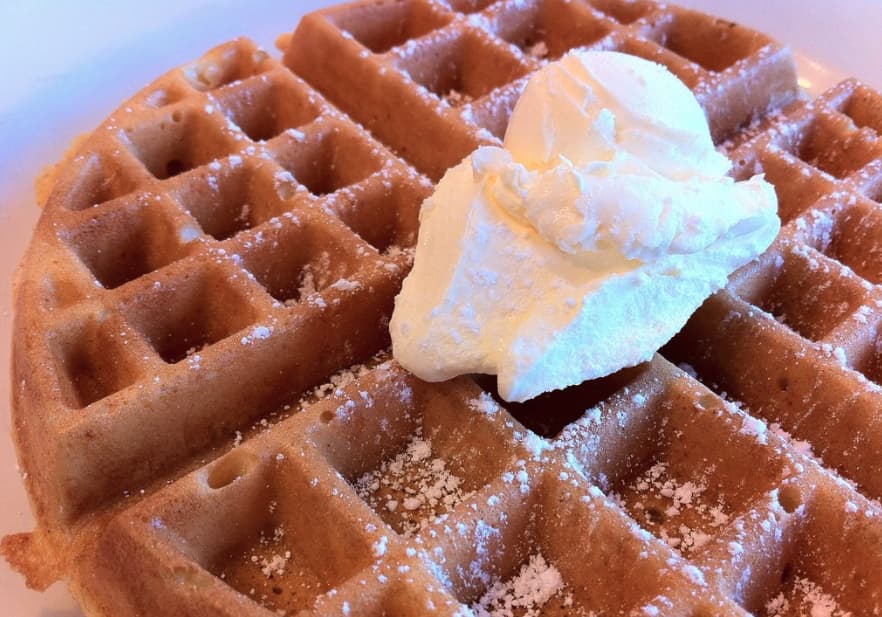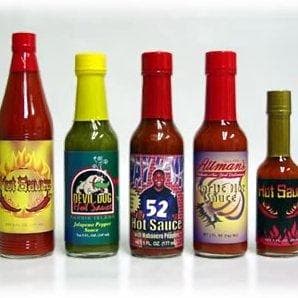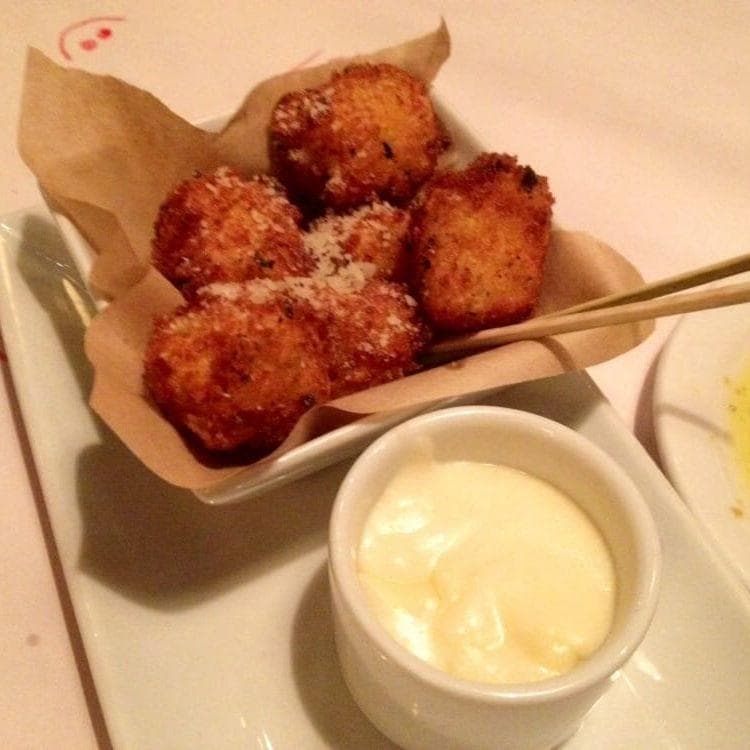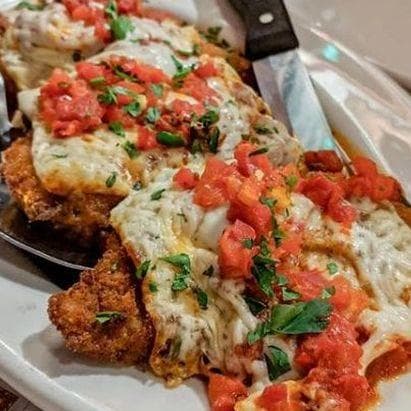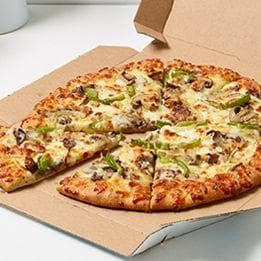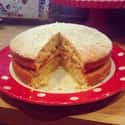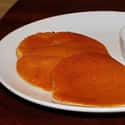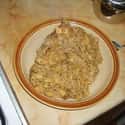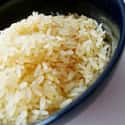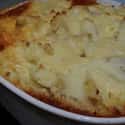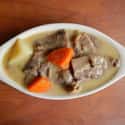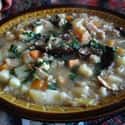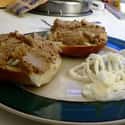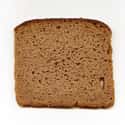-
(#1) Wartime Sponge Cake
Sponge cake is a simple delicacy that's been around since the Renaissance. It's delicious and easy to make, but during WWII, the ingredients - flour, sugar, butter, and eggs - were in heavy demand by soldiers. Eggs and sugar were especially in short supply in grocery stores around the world.
This Welsh version of the sponge cake had to be made sans eggs, but with a lot of margarine, syrup, and milk. Jam was usually spread in the middle of the cake's two layers. It wasn't as fluffy as what modern diners are used to, but if cooked properly, it still took on a golden hue.
-
(#2) Potato Flour Sour Cream
During WWII, 18% of the population of Poland was wiped out in the fighting. Germans snatched up all their land, which meant the Polish people had to do their best with what ingredients they had.
Not every meal, however, was a thing of drudgery. Potato flour sour cream was meant to be served with blueberry dumplings, a favorite of Polish children.
The sour cream was made of milk, sugar, and potato flour, which is similar to a standard whipped cream recipe. Maria Karpowiczowa, a woman who grew up outside of Warsaw, collected WWII Polish recipes and said of the potato flour sour cream: "[T]he kids indulge themselves, because they can cover the dumplings with a copious amount [of the cream]."
-
(#3) Bubble And Squeak
A big part of rationing was using leftovers to make food last as long as possible, so a lot of meals were basically thrown together. “Bubble and squeak” wasn’t one specific kind of recipe, although there was one necessity: mashed potatoes.
During rationing, potatoes were easy to grow, plentiful, and took on whatever flavors were impressed upon them. When used in bubble and squeak, mashed potatoes turned every dinner into a kind of potato pancake, usually filled with whatever meat and veggies were around.
-
(#4) Mock Fish Fillets
In England, cooks attempted to keep some semblance of normalcy by frying mock fish fillets. The filets were cooked in the same way as an actual fish filet, but with rice.
To make mock fish fillets, they mixed rice and egg into a half-inch-thick pan of fried rice, chilled it, then cut it into filets. They breaded the filets (if bread was available) and fried them again until they had a golden appearance.
-
(#5) Economy Loaf
Demand for meat during WWII was high. Those on the front lines received most of the meat, so people back home came up with interesting ways to stretch what they had or created new recipes.
A staple of the early 20th century was meatloaf, made from ground beef and various ingredients formed into a loaf and baked. During WWII, cooks began substituting vegetables to make an economical meal.
Rather than ground beef, this loaf contained a cup of peas, a cup of mashed potatoes, and a can of condensed tomato soup. It was an efficient way to get some vegetables and use leftovers.
-
(#6) Bean Cake
Baking without flour may sound impossible, but when this staple was scarce, people living in occupied Poland made do. In many cases, they used beans instead of flour.
Beans don't have the same taste or consistency as flour, but when boiled down and minced, they become malleable and can be sweetened and worked into a cake. Beans have an earthy flavor, but thanks to the 6 tablespoons of sugar in this recipe, it was probably quite tasty.
-
(#7) Roosevelt Coffee
Coffee is a must-have for many people, but during WWII, pretty much every coffee bean in America was shipped overseas, making coffee one of the hardest things to ration. Americans were tasked with going through one pound every five to six weeks, which meant they were drinking less than one cup a day.
Americans who absolutely had to have a cup of joe started making "Roosevelt Coffee," named for the president at the time. It was simply reused coffee grounds that made a watery coffee substitute. Sometimes ingredients like chicory and Postum were mixed with the coffee. The chicory added spice to the coffee, while Postum is a coffee substitute made of wheat bran, wheat, molasses, and maltodextrin.
-
(#8) Onions Stuffed With Grape-Nuts
Vegetables were plentiful in America during WWII. Fresh fruit and veggies were impossible to ship overseas without spoiling, so Americans were told to fill up on them. Onions were easy to grow and extremely hardy, and in the 1940s, cooks began stuffing them with various ingredients.
Grape-Nuts (which contains neither grapes nor nuts, but is made from wheat and barley) was an American staple at the time. Even though some people considered the cereal tasteless, it gave a stuffed onion a consistency similar to an onion stuffed with ground beef. With the right amount of spices, this dish might even make a tasty appetizer today.
-
(#9) Braised Beef Tongue
A cow's tongue is huge, rubbery, and tough - not the thing you imagine a family sitting down to enjoy. But during WWII, American families were only able to buy meat products such as tongue and feet, which made for interesting twists on classic dishes. Beef tongue wasn't just served as a big tongue on a plate; instead, it was presented in something closer to a casserole.
Braised beef tongue will be fairly recognizable. One modern recipe calls for carrots, onions, celery, and tomato sauce, plus the tongue. To get the tongue into an edible consistency, it has to be boiled for two hours, then baked for another two in a casserole surrounded by vegetables.
-
(#10) Spit Soup
Spit soup doesn't have the most appetizing name in the history of culinary innovations, but the dish itself is actually tasty. The soup was created in occupied Poland as a way to make use of excess barley.
Polish people no longer had access to many of the foods that made their cuisine so rich. Proteins like oysters and anchovies were off the table, as were items as simple as chestnuts.
To survive during WWII, Poles made a soup out of barley, a hardy cereal. While eating the soup, they had to spit out the husks, hence its less-than-appetizing name.
-
(#11) Vegetarian Chopped Liver
Chopped liver is a traditional Jewish recipe that uses schmaltz and gribenes - chicken fat and cracklings - to fortify the chopped liver that makes up most of the dish.
During WWII, Jewish families were advised to stretch out their food rations, which might mean using breadcrumbs to reinforce meals or making a vegetarian version.
The vegetarian version of this dish made use of fresh fruits and vegetables and whatever was growing in victory gardens.
Home chefs swapped out the meat for green beans, peas, onions, hard-boiled eggs (if available), and crackers.
-
(#12) Bread Fortified With Sawdust
People living in England and Germany during WWII didn't have the vast fields of wheat America enjoyed, so they mixed what little they had with sawdust, also known as "tree flower."
One German recipe for "black bread" called for half rye grain, two parts sliced beets, two parts sawdust, and one part "minced leaves and straw." Everything was mixed together and baked like normal.
New Random Displays Display All By Ranking
About This Tool
Food is essential to human survival. In WWII, food scarcity is undoubtedly the most deadly blow to the army. The reason why the German army failed on the Soviet battlefield was largely due to insufficient food supply and no food to provide calories and energy. The foods of each country in WWII are different because of the difference in culture, climate, and customs.
War is cruel. War destroyed economic development and the living environment. Food was the most important support during World War II. We would introduce random 12 foods that were supported people to maintain a normal life during WWII.
Our data comes from Ranker, If you want to participate in the ranking of items displayed on this page, please click here.


